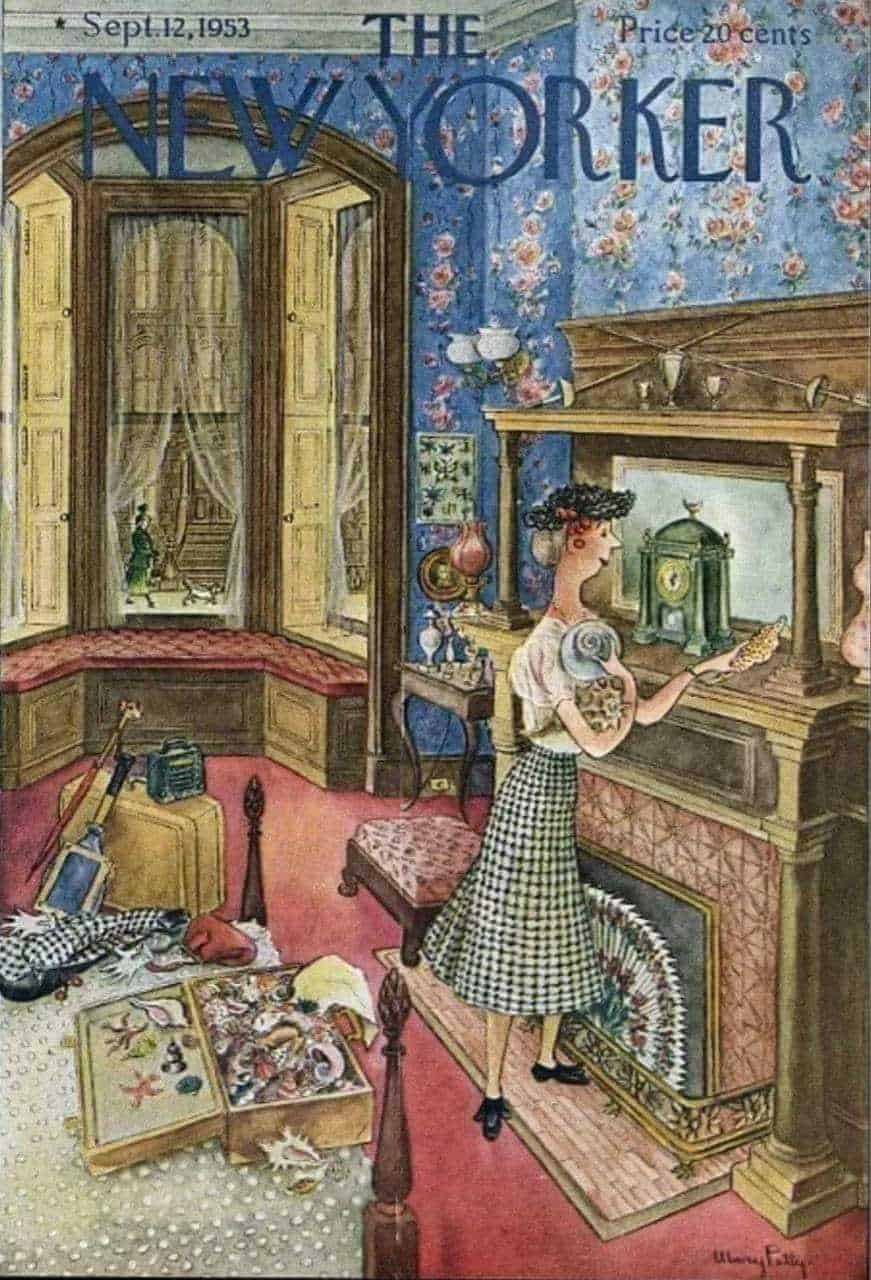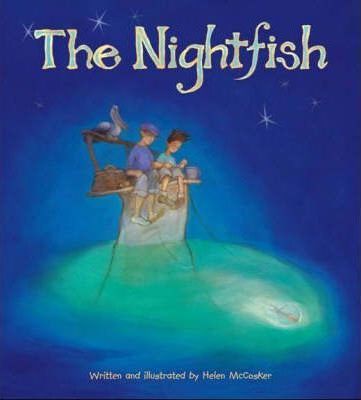The Nightfish is an Australian picture book written and illustrated by Helen McCosker. Published in 2006, this children’s story makes a good counterpoint to There’s A Sea In My Bedroom (1984). In Margaret Wild’s 1984 story, a boy takes a shell home with him from the beach and — as a child of the eighties I can tell you — no one thought twice about taking souvenirs from nature.

Our current generation of children are more environmentally aware. Now they have at least bumped up against the idea of ‘Take nothing but photos, leave nothing but footprints’. This change of societal attitude is reflected in their picture books: If you take something from nature you must return it, otherwise you’ll upset the environmental balance and all hell will break loose.
SETTING OF THE NIGHTFISH
The setting of this picture book is an interesting mixture of cosy and scary. The little fishing village, nestled at the end of a bay, is cosy. The off-kilter perspective can go either way in illustrations, seeming either childlike or scary, depending on context. The colour palette of purples juxtaposed against orange hues reflects that mixture of cosy versus scary.
Unlike Margaret Wild’s There’s A Sea In My Bedroom, or Theodore Mouse Goes To Sea, or The Sailor Dog, The Nightfish uses the depths of the ocean as an arena rather than sticking to the surface, which in many stories might equally be a flat plain of earth.
A note at the back of the book explains to fans of mimesis that the author/illustrator has taken liberties in creating her fish, which is based on the baby angler fish, usually found in far deeper waters, and here called a ‘nightfish’ rather than a ‘lightfish’. This is an interesting thing to do if your fantasy elements are a not so far removed from reality that a reader might think, “Hang on, that’s not right!” Do as you wish for the purposes of story and add a disclaimer. Simples.
This setting could easily be anywhere, but Helen McCosker has gone out of her way to make it Australian by repetition of the particularly Australian exclamation of surprise, “Hooley dooley!“
Helen McCosker is also making use of the miniature in storytelling, though it’s subtle. The boy is introduced in the first line as Adrian Nicholas Timms, but on page two his name has been shortened to ‘Ant’ — ants are tiny, living vulnerably in a much bigger world than they’d realise. Our main character is therefore also tiny, depicted as such on the establishing two-page spread, but also in relation to the vast depths of ocean, hinted at throughout the arena of this particular story.
Helen McCosker depicts the night as a magical, sparkly sort of place, and it is until Ant does something he shouldn’t. I’m always interested in how illustrators depict the night-time, because if we depicted night as it really is, no one would see anything much. There’s a wide variety of palettes you can use to illustrate the dark.
STORY STRUCTURE OF THE NIGHTFISH
SHORTCOMING
Ant’s shortcoming is that he doesn’t understand what he is taking.
DESIRE
He wants to collect something to keep in his own room, as a pet for himself. But he doesn’t realise the creature has its own social connections.
OPPONENT
Ant’s opponents are the scary deep sea creatures who come to collect their baby.
PLAN
Ant doesn’t have a plan, except to keep a hold of the fish. In stories like this, the opponent must have the plan. The fish tell Ant to give their baby back, and when he doesn’t…
BIG STRUGGLE
Twice, the fish wreak havoc on the village, taking first the lesser sources of light, then coming back for the main ones (the street lights and lighthouse).
ANAGNORISIS
Ant puts two and two together and realises he’d better give the nightfish back. So he does.
NEW SITUATION
This part of the story is truncated. But we can extrapolate: Now that the precious fish has been returned to the sea, the scary, deep sea fish will stop wreaking havoc upon the village.

